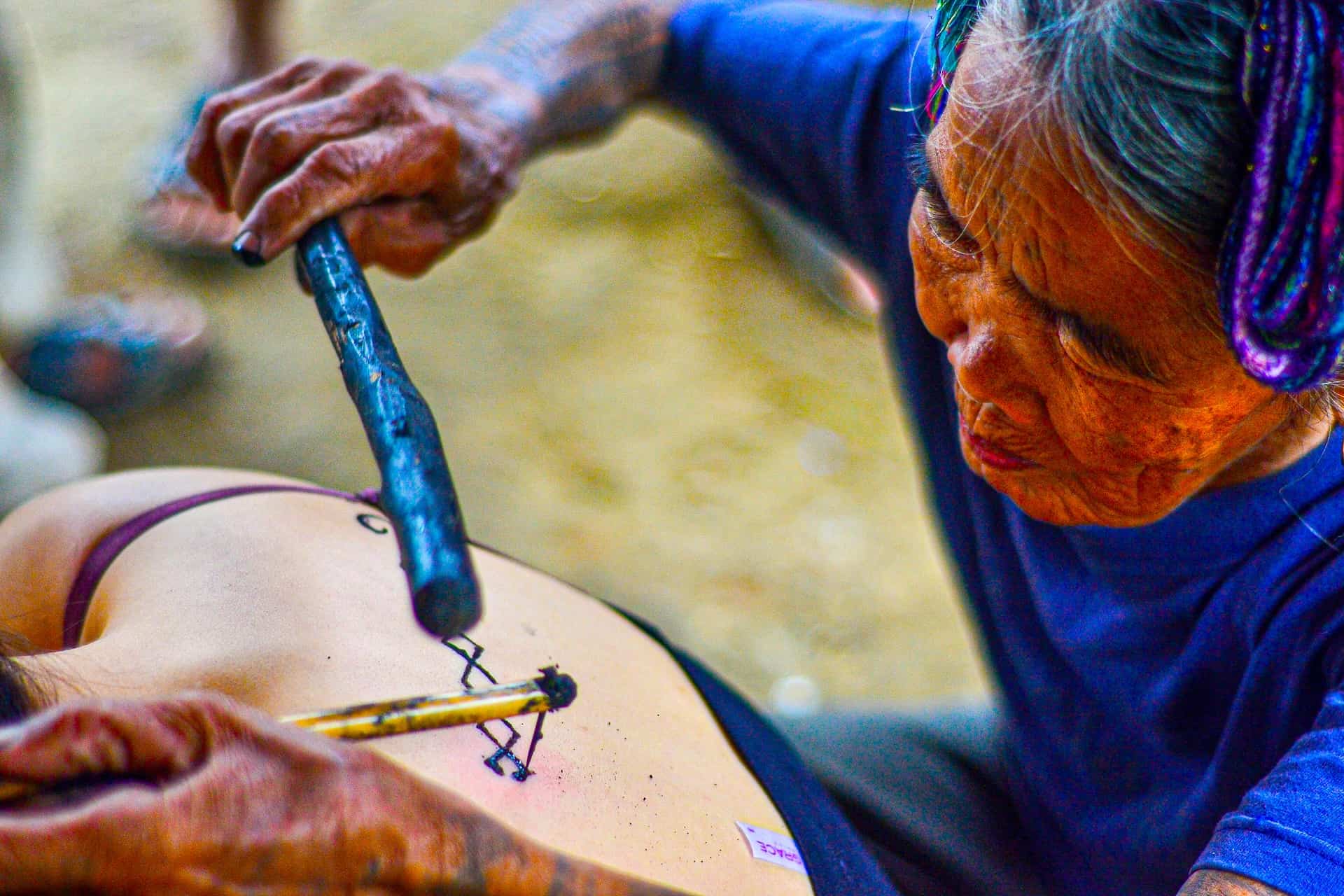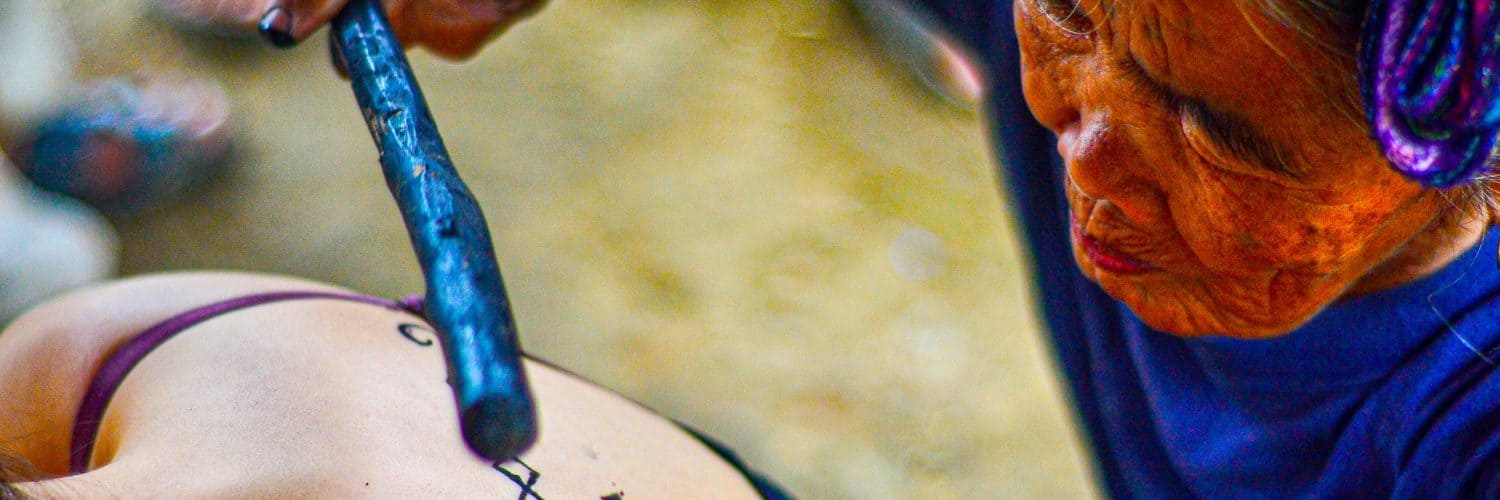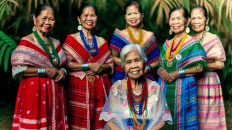Tattoos in the Philippines:
Tattoos in the Philippines are a window into the country’s soul, revealing tales of bravery, beauty, and identity. From the ancient warriors of the Visayas to the urban youth of Manila, the story of the Filipino tattoo is a continuous thread that weaves the past with the present. As Filipinos move forward into the future, they carry with them the indelible marks of their history, wearing them with pride on their skin.
The Philippines has a rich tapestry of history, culture, and traditions. Among these is the art of tattooing, which has been practiced for centuries and has evolved significantly over time. From the indigenous tribes to modern urban centers, the Filipino tattoo is a testament to the country’s dynamic culture and heritage.

1. Historical Significance: Tattoos as Identity and Symbolism
Ancient Rituals and Markings:
In the pre-colonial period, the Philippines was home to numerous indigenous tribes, each with their unique customs and traditions. For many of these tribes, tattoos were not just body decorations but symbols of achievement, courage, and status. The Visayans, for instance, had a tradition called “Pagbabatok.” Young warriors earned their tattoos by proving themselves in battle, and each tattoo signified a particular feat or kill. For women, tattoos were markers of beauty and social standing, often signifying one’s skill in weaving or singing.
Colonial Influence and Decline:
The Spanish colonization in the late 1500s brought about a decline in the indigenous tattooing traditions. The colonizers viewed tattoos as “pagan” and discouraged their practice, associating them with savagery and barbarism. Over the centuries of Spanish rule, indigenous tattooing practices waned, and many of the traditional designs and their meanings were lost or diluted.
2. The Kalinga Tribe: Guardians of the Ancient Art
A Living Tradition:
High in the mountainous regions of the Northern Philippines, the Kalinga tribe continues the age-old practice of “batok” (hand-tapped tattooing). The tribe sees tattoos as a rite of passage and a reflection of one’s journey through life. While many Filipino tribes have abandoned or forgotten the ancient ways of tattooing, the Kalinga have preserved this sacred art form, handing it down from generation to generation.
Apo Whang-Od:
The name Apo Whang-Od has become synonymous with traditional Filipino tattooing. As the oldest mambabatok (traditional tattoo artist) of the Kalinga tribe, Whang-Od has dedicated her life to preserving the art of batok. Tourists from all over the world trek to the remote village of Buscalan to receive a tattoo from this legendary artist. Whang-Od has also trained younger members of her tribe, ensuring that the ancient art form continues to thrive.
3. Modern Filipino Tattoos: Fusion of Old and New
Urban Evolution:
The urban centers of the Philippines have witnessed a resurgence in the interest and appreciation of tattoos. This modern tattoo movement combines traditional Filipino designs with contemporary techniques and styles. Young Filipinos are proudly wearing tattoos that showcase their heritage, intertwining ancient symbols with modern narratives.
Tattoo Conventions and Popularity:
The Philippines has seen an increase in tattoo conventions, workshops, and seminars, showcasing both local and international artists. These events not only promote the art form but also serve as a platform for Filipino artists to exchange ideas and techniques with their global counterparts. The fusion of local motifs with global trends has resulted in unique designs that are distinctively Filipino.
4. Cultural Implications: Acceptance and Taboos
Modern Acceptance vs. Traditional Stigmas:
While the younger generation has widely embraced tattoos, there remains a cultural divide. The older generation, influenced by centuries of colonial rule and religious teachings, often sees tattoos as markers of rebellion or immorality. However, as tattoos become more mainstream, the societal perceptions are slowly changing.
Tattoos and Profession:
In the professional realm, there’s still some resistance to visible tattoos. Conservative fields like banking or law may still frown upon or have policies against visible tattoos. But as global culture continues to influence the Philippines and as more professionals sport tattoos, these stigmas are slowly dissipating.
5. Future of Filipino Tattoos: Preserving the Past, Embracing the Future
Tattoo Schools and Training:
Recognizing the cultural and historical significance of tattooing, there’s a push to establish formal schools and training programs in the Philippines. These institutions aim to teach not only the technical aspects of tattooing but also its cultural and historical context.
Innovation and Technology:
The world of tattooing is continually evolving, with new techniques, equipment, and styles emerging. Filipino tattoo artists are at the forefront of this evolution, blending traditional motifs with modern technology. From 3D tattoos to bioluminescent inks, the future of Filipino tattoos promises to be as vibrant as its storied past.

















Add comment